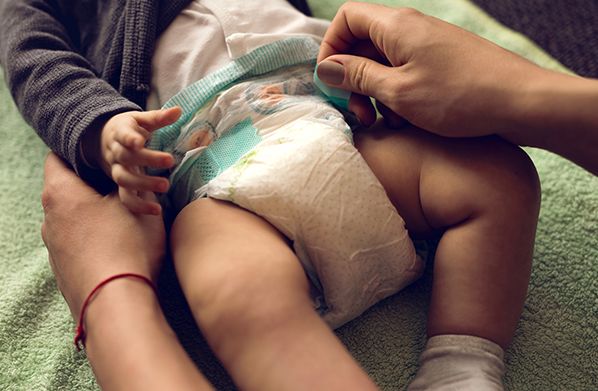Have a child on the way? Raising your bundle of joy is going to be expensive, but do you know just how costly?
Celebrities like Blake Lively, Kerry Washington, and Megan Fox are about to welcome their second or third child while couples like Blac Chyna and Rob Kardashian are expecting their first. The rights to the Kardashian baby’s delivery, childhood and adolescence have probably already been sold by grandma Kris Jenner. Sadly, the couple will probably need that much money to raise a Kardashian baby, which is certain to be upwards of more than $400,000.
According to the Department of Agriculture (AG), that’s about what it costs high-income families to raise a child from birth to 18 years old (in 2013). By calculating what Americans spend on their children for everything from diapers to braces to shelter, they came up with an average of $176,550 for low-income families, $245,340 for middle-income families, and $407,820 for high-income families in 2013.
AG calculated the numbers dating back to 1960 to provide a view of how child-rearing expenses have changed over the past 53 years. For example, in 2003, middle-income families spent $226,108 and that’s up from $208,530 in 1993. However, in 1983 it was under $200k ($195,499) and has hovered around that level going back to 1960 when the cost was $198,556. From that we gather, that since the 1990s there’s been an acceleration in costs.
The analysis looks at categories of expenses and we gain some clues into what may be accelerating costs: education and child care. The Wall Street Journal explains:
We spend much less on basic items. Food, clothes, personal care items such as toothbrushes and shampoo, and even toys and sports gear have all decreased in price due to technological strides in manufacturing and agriculture, and because so much of these goods’ production has been sent overseas.
What we do spend more on is services for our children. Fixed costs like health care have increased. We also spend significantly more on child care and education. The average middle-income, two-parent household spent 18% of its budget on education and child care in 2013, up from 2% in 1960. (From 1960 until 2007, this category included families with and without the expense, which brought down the overall average cost. Since 2008, this category has only included families with child care-related expenses.)
Interestingly, the cost of these two big ticket items–education and day care–have been exacerbated by government. More and more families are paying for private schools because too many public schools do not measure up. Day care is made more expensive because of excessive government regulations. With more and more families having both parents in the workforce, this becomes a key consideration in bringing up children.
Meanwhile, higher education is now so expensive that it is almost impossible for a family to pay for it or for a student to work her way through school as in the past. Part of the reason tuition is so expensive is the government's involvement with college loans. If the government helps make money available, then colleges and universities have little reason to rein in the costs of education. Normal market forces do not operate.
All of this is more burdensome because earnings have gone relatively flat since the recession and, even without rising costs, family budgets are increasingly squeezed.
It is government policies that are to a significant degree responsible for the rising cost of raising families and yet the solution from progressives is inevitably . . . more government programs. A case in point is this grim picture of parenthood from Salon that argues that different social policies could save the day:
All this is proof that the “happiness gap” between those who have kids and those who don’t is an international phenomenon. But a new collaborative study by researchers at the University of Texas, Wake Forest University and Baylor University finds the size of the gap differs from country to country. The researchers studied 22 nations, all wealthy countries with similar birth rates. They discovered that American parents are 13 percent less happy than American non-parents, the largest gap in all the countries surveyed, and one significantly larger than the gap observed in Great Britain and Australia. When researchers drilled down to find out exactly why the gulf is so large in the U.S., they found out it had everything to do with social policies. More specifically, America’s shameful lack of family and parent-support laws explain why so many of the country’s parents fall short on the happiness meter.
Yes, if indeed there is a happiness gap in the U.S., it is because of social policies–just not in the way the progressives believe. More government is not going to do the trick, and, as we have seen, is likely to make having children even more expensive. We need a thriving economy, more freedom, and a system of values that stresses the importance of marriage (including the sacrifices required to bring up children). Having kids is still rewarding – we just need to support policies that empower parents.


